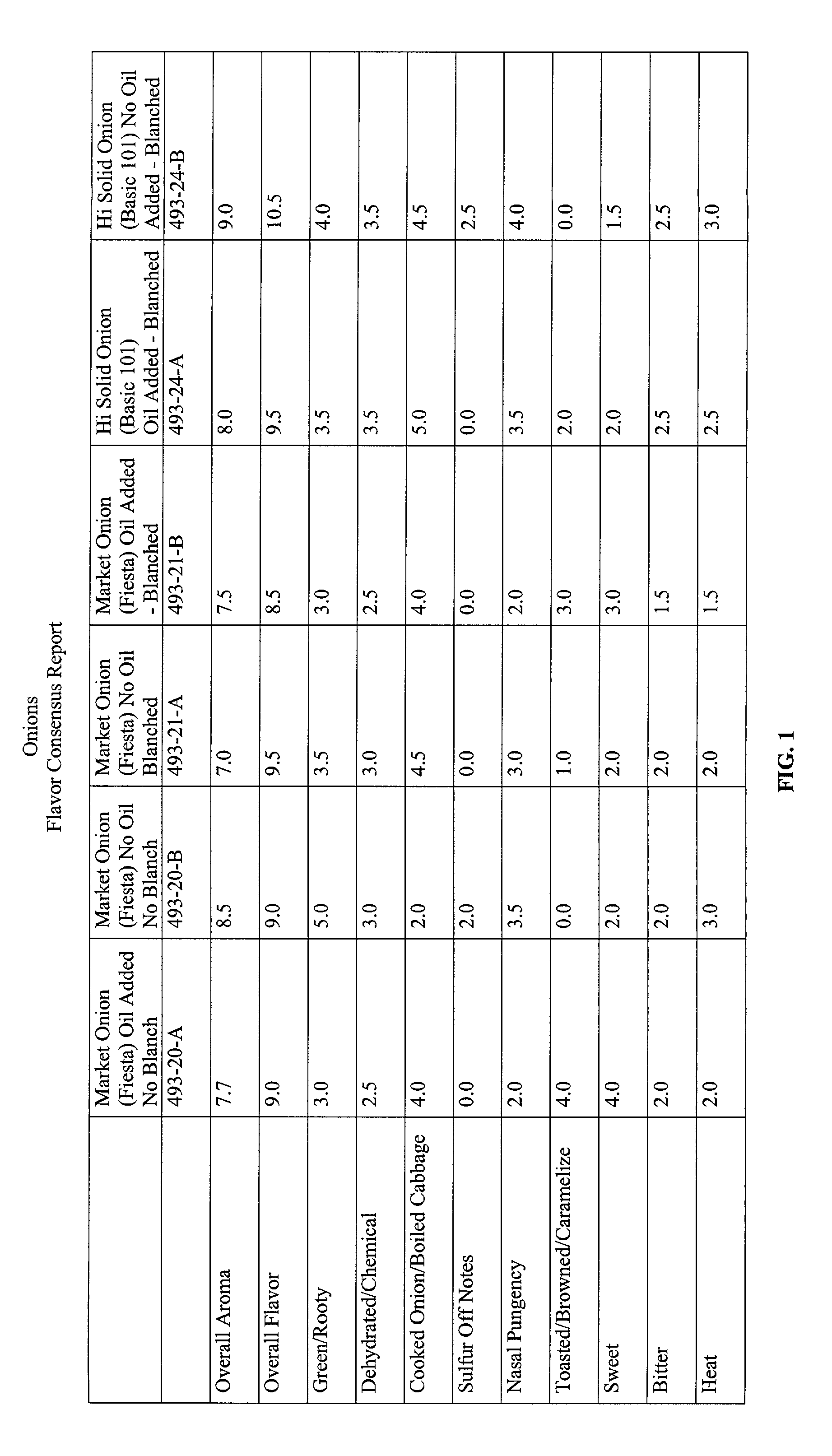Method for preparing sauteed vegetables
a technology for sauteed vegetables and vegetables, applied in the field of sauteed vegetables, can solve the problems of large equipment requirements, inability to pan-saut all vegetables for industrial use, and inability to meet the needs of users, and achieve the effect of rapid saute and drying rate and increased air speed
- Summary
- Abstract
- Description
- Claims
- Application Information
AI Technical Summary
Benefits of technology
Problems solved by technology
Method used
Image
Examples
example 1
[0028] Approximately five pounds of whole onions were obtained. The onions were treated manually with knives to remove the roots, tops, and skins. The onions were then hand-washed with running water from a hose. After washing, the onions were diced using a Urschell model G dicer whereby the onions were cross-cut at a length of between 1 and 1.5 inches and a width of 3 / 8th of an inch. Five pounds of the sliced onions were then placed in a lab blancher basket. They were steamed for one minute, with the product having a surface temperature of about 190.degree. F. A second batch of onions equaling five pounds was also blanched. The cut and blanched onions were then mixed together and sprayed with 227 grams of butter flavored margarine. The margarine was evenly distributed over the onions with a spatula. The onions were then transferred to a lab convection drier with the product added to about an inch and a half in depth. The onions were sauted at 300.degree. F. for 12 minutes, whereby h...
example 2
[0030] The onions of Example 1 were placed in a lab storage freezer and spread on a tray to simulate IQF freezing. After one hour the product was placed in a plastic bag and shaken to make IQF pieces. The resultant IQF onion had a good flavor and was well suited for industrial uses.
example 3
[0031] The onions of Example 1 were further dried at 220.degree. F. for 14 minutes with the air flowing upward, followed by air drying at 195.degree. F. for 14 minutes with the air flowing downward. Again, the air direction was changed to ensure even drying. The onions were then removed from the tray and hand stirred to fluff. The onions were further dried at 155.degree. F. for 45 minutes with the air flowing upward. The onions were then hand-stirred to fluff them and were dried at 140.degree. F. for an additional two hours. The resultant weight of the onions was 1.35 pounds. As can be seen, there was a significant moisture loss in the onions. The resultant onions had a total moisture content equal to about 7%.
PUM
 Login to View More
Login to View More Abstract
Description
Claims
Application Information
 Login to View More
Login to View More - R&D
- Intellectual Property
- Life Sciences
- Materials
- Tech Scout
- Unparalleled Data Quality
- Higher Quality Content
- 60% Fewer Hallucinations
Browse by: Latest US Patents, China's latest patents, Technical Efficacy Thesaurus, Application Domain, Technology Topic, Popular Technical Reports.
© 2025 PatSnap. All rights reserved.Legal|Privacy policy|Modern Slavery Act Transparency Statement|Sitemap|About US| Contact US: help@patsnap.com

